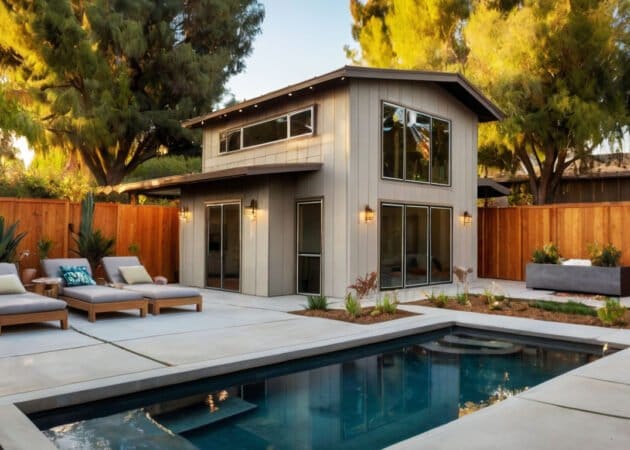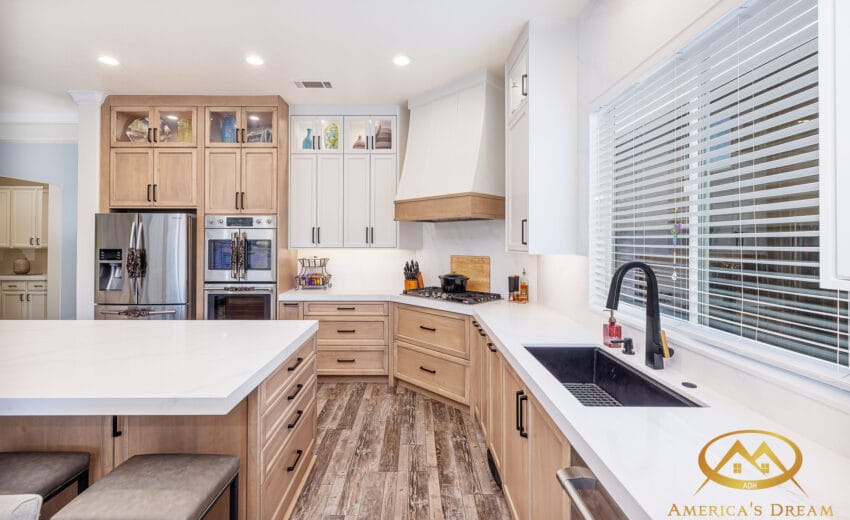As housing prices skyrocket and urban sprawl expands, many are turning to innovative solutions to address this growing dilemma. One such solution is Accessory Dwelling Units (ADUs).
If you haven’t heard of ADUs yet, you will soon. These living spaces are transforming the housing landscape by offering an affordable, sustainable, and practical way to increase housing availability. This article dives deep into ADU housing, exploring the benefits of building an accessory dwelling unit, how they function, and why they could be a game-changer for housing affordability and community development.
What is an ADU?
An ADU, or Accessory Dwelling Unit, is a secondary living space located on the same lot as a primary residence. These units can take many forms: standalone buildings, converted garages, basements, or even attics. The beauty of an ADU lies in its flexibility—whether it’s a small dwelling unit in a suburban backyard or an addition to an urban home, the possibilities are endless.
ADUs can serve multiple purposes, such as housing for elderly parents, rental units for additional income, or guest houses for visiting family and friends. As housing costs rise, especially in urban areas, ADUs provide a creative solution for homeowners and renters alike. Learn more about maximizing property value through thoughtful upgrades like ADUs here.
The Rising Popularity of ADUs
The popularity of ADUs has surged in recent years. Here’s why:
- Housing Affordability: ADUs are generally less expensive to build than traditional homes, offering an affordable housing option for homeowners and renters.
- Flexibility and Functionality: ADUs can be tailored to specific needs, such as private spaces for family members, rental opportunities, or even home offices. This versatility allows homeowners to maximize their property’s potential.
- Urbanization and Space Efficiency: With limited urban space, ADUs efficiently utilize available land, especially in high-density cities. Discover how urban upgrades can transform underutilized spaces into functional living areas here.
The Basics of Building an Accessory Dwelling Unit
Building an ADU is a complex process that requires careful planning and adherence to local regulations.
1. Zoning and Permitting
Before planning your ADU, check local zoning laws. These dictate where and how ADUs can be built. Cities like Los Angeles and Portland have relaxed zoning rules to encourage ADU development.
Permits are essential and often include construction, electrical, plumbing, and rental permits. Navigating these requirements can be overwhelming, but working with professionals can streamline the process. Learn about compliance and regulations for construction projects here.
2. Design and Construction
ADUs come in various shapes and sizes, from modular units to custom-built structures.
- Modular ADUs: Prefabricated units that are cost-effective and quick to install.
- Custom-Built ADUs: Tailored to specific needs, offering more creative flexibility.
Working with experienced architects and contractors is crucial to ensuring the project adheres to local codes and meets your vision. For inspiration on creating functional and stylish spaces, explore custom design options here.
3. Utilities and Infrastructure
Ensuring access to utilities like water, electricity, and sewage is a key part of the process. Urban areas often have existing infrastructure, making this easier. However, rural areas may require alternative solutions like septic systems or solar panels.
For those building an ADU as a rental property, consider separate utilities or meters for tenants. Explore energy-efficient solutions here.
Check Our Recent Projects
The Advantages of ADU Housing
Increased Affordability
ADUs help homeowners generate additional income. Renting out an ADU can offset mortgage payments or living costs, making homeownership more accessible.
Family and Social Benefits
ADUs provide a way to house elderly parents, adult children, or extended family members, fostering closer relationships while maintaining privacy.
Community Development and Sustainability
By reducing urban sprawl, ADUs promote sustainable development and efficient use of land. They also provide much-needed housing in areas with limited availability. Learn how innovative home solutions like ADUs contribute to community growth here.
ADUs: A Solution for the Future of Housing
ADUs are revolutionizing housing by providing flexible, sustainable, and cost-effective options for homeowners and renters alike. With support from policymakers and innovative designs, building an accessory dwelling unit is becoming a mainstream solution for addressing the housing crisis.
Ready to explore how an ADU could enhance your property? Find out more about customized ADU designs and installation services here.
















